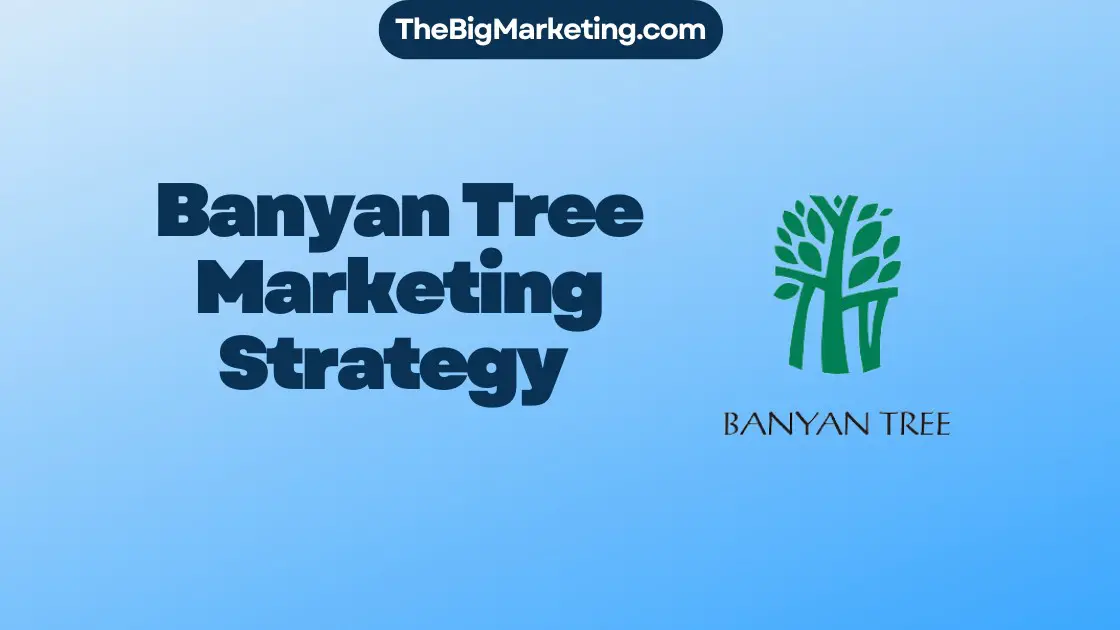Competitive Marketing Intelligence is a powerful tool that enables businesses to gain a competitive advantage by obtaining in-depth insights into customer preferences, competitor strategies, and marketing interactions. It goes beyond traditional competitive intelligence, providing a comprehensive understanding of customer behavior and allowing businesses to adapt their messaging and marketing strategies effectively.
With the help of Competitive Marketing Intelligence, businesses can better understand customer pain points, identify market trends, and tailor their marketing efforts to better serve their target audience. By utilizing various market research techniques and competitive intelligence tools, businesses can gather valuable data to improve their marketing strategies, outperform their competitors, and make informed decisions based on market dynamics and industry benchmarking.
Some of the key areas addressed by Competitive Marketing Intelligence include competitive analysis, competitor research, marketing strategy analysis, and competitive landscape analysis. By delving deep into these aspects, businesses can uncover valuable insights that will shape their marketing strategies and drive success in the market.
Key Takeaways:
- Competitive Marketing Intelligence provides in-depth insights into customer preferences and competitor strategies.
- It helps businesses understand customer behavior and adapt their messaging to better serve their target audience.
- Tools like ad intelligence tools, SEO tools, and firmographic data tools aid in competitive intelligence efforts.
- Competitive Marketing Intelligence allows businesses to improve their marketing efforts, gain a competitive advantage, and make informed decisions based on market data.
- Industry benchmarking and competitive landscape analysis are crucial components of Competitive Marketing Intelligence.
The Importance of Competitive Intelligence and Analysis in Marketing
Competitive intelligence plays a vital role in the field of marketing, providing businesses with valuable insights that help them understand their target audience, identify competitor strategies, and gain a competitive advantage in the market. By conducting in-depth marketing analysis and gathering competitor insights, businesses can make informed decisions and improve their marketing efforts to effectively engage customers and drive sales.
Competitive intelligence allows businesses to gain a comprehensive understanding of their target audience, including their preferences, behaviors, and pain points. By analyzing this information, businesses can tailor their marketing strategies to address customer needs and deliver relevant messaging that resonates with their audience.
Competitor Insights
One of the key benefits of competitive intelligence is the ability to gain valuable competitor insights. By monitoring and analyzing your competitors’ marketing strategies, messaging, and tactics, you can gain a deeper understanding of how they are targeting the same audience. This knowledge can help you identify gaps in the market and opportunities for differentiation.
Competitive intelligence allows you to identify your competitors’ strengths and weaknesses, enabling you to develop marketing strategies that highlight your unique value propositions and competitive advantages. By leveraging competitor insights, you can position your brand effectively and differentiate yourself from the competition.
Gaining a Competitive Advantage
Competitive intelligence provides businesses with the necessary knowledge and data to gain a competitive advantage. By understanding your competitors’ strategies and tactics, you can identify areas where you can outperform them and develop unique selling propositions that set you apart in the market.
With a competitive advantage, you can attract more customers, increase market share, and drive business growth. The insights gained from competitive intelligence enable you to make informed decisions and allocate resources effectively to maximize your marketing ROI.
Competitive intelligence and analysis are essential tools for businesses to thrive in today’s highly competitive market. By understanding your target audience, monitoring your competitors, and leveraging data-driven insights, you can develop effective marketing strategies that drive success and help you stay ahead of the competition.
| Benefits of Competitive Intelligence and Analysis in Marketing |
|---|
| Identifying customer preferences and pain points |
| Gaining insights into competitor strategies and tactics |
| Developing unique selling propositions and competitive advantages |
| Allocating resources effectively to maximize ROI |
Competitive Marketing Intelligence vs. Competitive Intelligence
Competitive marketing intelligence and competitive intelligence are two types of business intelligence that provide key insights for businesses. While both types of intelligence are important for gaining a competitive edge, they have different focuses and provide different insights.
Competitive marketing intelligence focuses on understanding customers and their consumer behavior better than competitors. It provides businesses with valuable insights into market research and consumer behavior, helping them identify customer pain points, preferences, and buying patterns.
On the other hand, competitive intelligence primarily looks at competitor strategies, behavior, and priorities. It provides businesses with insights into their competitors’ actions, products, pricing, and marketing strategies, enabling them to stay informed and make informed decisions about their own business strategies.
Both competitive marketing intelligence and competitive intelligence play crucial roles in helping businesses stay competitive in the market. While competitive marketing intelligence provides a deep understanding of customer behavior, allowing businesses to tailor their marketing efforts accordingly, competitive intelligence empowers businesses to keep a close eye on their competitors’ moves and market dynamics.
By leveraging both types of intelligence, businesses can gain a comprehensive understanding of the market, their customers, and their competitors. This knowledge equips them with the insights needed to develop effective marketing strategies, enhance sales and marketing teams‘ performance, and make informed business decisions.
The Benefits of Competitive Marketing Intelligence and Competitive Intelligence:
- Gain insights into consumer behavior and preferences
- Understand competitor strategies and market dynamics
- Identify market trends and opportunities
- Enhance marketing strategies and messaging
- Improve sales and marketing team performance
- Make informed decisions based on market data
Overall, competitive marketing intelligence and competitive intelligence are powerful tools that enable businesses to understand their target audience, stay ahead of their competitors, and drive success in the market. By leveraging these intelligence sources, organizations can gather valuable insights, adapt their strategies, and thrive in an ever-changing business landscape.
How to Gather Competitive Marketing Intelligence
Gathering competitive marketing intelligence is essential for businesses looking to gain a competitive edge in the market. By utilizing specialized tools and engaging in conversations with competitors, businesses can obtain valuable insights into their competitors’ strategies and the market landscape.
Competitive Marketing Intelligence Tools
One effective method of gathering competitive marketing intelligence is by utilizing competitive intelligence tools. Tools such as Crayon and Mintel provide businesses with access to market research data and insights on their competitors. These tools allow businesses to analyze competitor tactics, identify market trends, and make informed decisions based on real-time data.
Technographic Data
Technographic data plays a crucial role in gathering competitive marketing intelligence. It provides businesses with insights into the technology stack and digital footprint of their competitors. By analyzing technographic data, businesses can identify the tools and platforms used by their competitors, allowing them to gain a deeper understanding of their strategies and tailor their own marketing efforts accordingly.
Market Research Tools
Market research tools are an invaluable resource for gathering competitive marketing intelligence. They provide businesses with detailed information about market trends, customer preferences, and competitor performance. By leveraging market research tools, businesses can gain insights into consumer behavior, identify gaps in the market, and develop effective marketing strategies.
Social Listening
Social media offers a wealth of information that can be leveraged for competitive marketing intelligence. Social listening tools enable businesses to monitor and analyze conversations happening on social media platforms. By gaining insights from these conversations, businesses can identify customer sentiment, track competitor activities, and stay informed about industry trends.
Conversations with Competitors
An often-overlooked method of gathering competitive marketing intelligence is through conversations with competitors. Engaging in conversations with competitors or former employees can provide unique insights into market dynamics, competitor strategies, and industry benchmarks. By building relationships and engaging in open dialogue, businesses can gain valuable information that can inform their marketing strategies.
By utilizing competitive marketing intelligence tools, analyzing technographic data, conducting market research, leveraging social listening, and engaging in conversations with competitors, businesses can gather comprehensive insights that drive their marketing strategies and decision-making processes.
| Competitive Marketing Intelligence Tools | Technographic Data | Market Research Tools | Social Listening | Conversations with Competitors |
|---|---|---|---|---|
| Crayon | Gathering data on competitors’ technology stack and digital footprint | Insights into market trends, customer preferences, and competitor performance | Monitoring and analyzing conversations on social media platforms | Informative dialogues to uncover competitor strategies and benchmarks |
| Mintel | Tailoring marketing efforts based on competitor technology usage | Identifying gaps in the market and developing effective strategies | Tracking and staying informed about industry trends through social media | Gaining unique insights into competitor strategies and market dynamics |
Competitive Marketing Intelligence in Action
Competitive marketing intelligence is a powerful tool that allows businesses to gain valuable insights and take informed actions based on market data. By leveraging various techniques such as market research, analyzing technographic data, and gathering competitive insights, businesses can develop effective marketing strategies, tailor sales conversations, and identify new opportunities for growth.
Market Research
Market research is an essential component of competitive marketing intelligence. It involves gathering data and analyzing market trends, customer preferences, and competitor strategies. Through market research, businesses can identify gaps in the market, understand consumer behavior, and gain a deeper understanding of the competitive landscape.
Technographic data, a subset of market research, provides insights into the technological preferences and behaviors of target customers. This data helps businesses understand the technology stacks, software usage, and purchase intent of their audience, enabling them to tailor their marketing strategies to better meet customer needs and preferences.
Gathering Competitive Insights
In addition to market research, competitive marketing intelligence involves gathering competitive insights. This includes monitoring competitor activities, analyzing their marketing strategies, and identifying their strengths and weaknesses. By keeping a close eye on competitors, businesses can gain a deeper understanding of their positioning in the market and develop strategies to outperform them.
Competitive insights can be gathered through various channels, such as social media analysis, competitor websites, and industry reports. These insights provide valuable information about competitor pricing strategies, product offerings, and marketing tactics.
Developing Effective Marketing Strategies
Competitive marketing intelligence plays a crucial role in developing effective marketing strategies. By combining market research data, technographic insights, and competitive intelligence, businesses can create targeted and impactful marketing campaigns.
With a deep understanding of customer behavior, preferences, and competitor strategies, businesses can tailor their messaging and offerings to effectively communicate with their target audience. This helps businesses stand out from their competitors and attract and retain customers.
Tailoring Sales Conversations
Sales conversations are an integral part of any business’s success. Competitive marketing intelligence allows businesses to customize their sales conversations based on the insights gained from market research and competitive analysis.
By leveraging technographic data and competitive insights, businesses can identify pain points and key selling points of their products or services. This helps sales teams engage with potential customers more effectively, address their specific needs, and position their offerings as superior to the competition.
Identifying New Opportunities for Growth
Competitive marketing intelligence enables businesses to identify new opportunities for growth in the market. By analyzing market trends, uncovering customer demands, and keeping an eye on competitor activities, businesses can stay ahead of the curve and identify untapped market segments.
These insights can be used to develop new products or services, enter new markets, or pivot existing strategies to better align with emerging customer needs. By leveraging competitive marketing intelligence, businesses can capitalize on opportunities that their competitors might overlook and drive long-term growth.
3 Ways to Leverage Competitive Marketing Intelligence
Competitive marketing intelligence provides valuable insights that businesses can leverage to gain a competitive advantage in the market. By utilizing these insights effectively, businesses can drive revenue, win over customers, and stay ahead of competitors. Here are three key ways to leverage competitive marketing intelligence:
Focusing on the Right Deals for Your Pipeline
Incorporating competitive marketing intelligence into your sales and marketing strategy allows you to focus on the right deals for your pipeline. By understanding market trends and customer preferences, you can identify the most promising opportunities and allocate resources accordingly. This targeted approach increases the likelihood of successful conversions and maximizes the return on your efforts.
Tying Sales Conversations to Wider Trends and Pain Points
Competitive marketing intelligence enables businesses to have more impactful sales conversations by tying them to wider trends and pain points within the market. By aligning your messaging with the current market landscape, you can demonstrate an in-depth understanding of your customers’ challenges and position your products or services as the solution. This approach builds trust, credibility, and relevance, increasing the chances of closing deals.
Expanding Opportunities to Replace Competitors
With competitive marketing intelligence, businesses can identify gaps and weaknesses in their competitors’ offerings, allowing for targeted efforts to win over their customers. By leveraging these insights, you can develop compelling marketing strategies and tailored messaging that address the pain points and concerns of your target audience. This positions your business as a viable alternative and creates opportunities to replace your competitors in the market.
By leveraging competitive marketing intelligence, businesses can effectively navigate market trends, optimize sales conversations, and capitalize on opportunities to gain a competitive advantage. Embracing these strategies empowers businesses to make informed decisions, drive revenue growth, and establish a strong foothold in the market.
Competitive Intelligence in Marketing Development
Competitive intelligence is a valuable asset in the realm of product development. By leveraging competitive intelligence, businesses gain a comprehensive understanding of market dynamics, enabling them to identify gaps and opportunities that align with their go-to-market strategy. This strategic approach allows organizations to learn from their competitors’ mistakes, improve their products and services, and make informed decisions based on market demand and pricing.
Competitive intelligence provides businesses with valuable insights into the ever-evolving market landscape. By analyzing competitor behaviors, strategies, and consumer responses, companies can gain a competitive edge. This knowledge empowers businesses to refine their product development processes, ensuring their offerings meet customer needs effectively.
Understanding Market Dynamics
Effective product development hinges on a deep understanding of market dynamics. Competitive intelligence enables businesses to analyze market trends, consumer preferences, and competitor positioning. By comprehending these dynamics, organizations can develop products that meet market demands and offer distinct advantages over their competitors.
| Market Dynamics | Importance in Development |
|---|---|
| Customer preferences | Aids in designing products that align with target audience needs. |
| Competitor positioning | Identifies gaps in the market to develop unique value propositions. |
| Industry trends | Informs product development strategies to stay ahead of the curve. |
Effective Go-to-Market Strategy
Competitive intelligence is an invaluable tool in developing an effective go-to-market strategy. By closely monitoring competitor actions, businesses can tailor their marketing approaches to differentiate themselves, optimize pricing strategies, and target the right market segments. This strategic approach allows organizations to penetrate the market successfully and establish a strong foothold.
Moreover, competitive intelligence helps businesses anticipate and respond to market shifts, ensuring their go-to-market strategies remain agile and adaptable. By staying informed, organizations can proactively adjust their strategies to capitalize on emerging opportunities and overcome potential challenges.
Improving Product Offerings
Competitive intelligence enables businesses to analyze their competitors’ product offerings, identify areas for improvement, and develop products that outshine the competition. By learning from industry leaders and analyzing customer feedback, organizations can fine-tune their products to deliver enhanced value and a superior customer experience.
Additionally, competitive intelligence provides valuable insights into emerging technologies and trends that can shape the future of product development. By harnessing this knowledge, organizations can leverage these trends to innovate and create products that exceed customer expectations.
The Goals of Competitive Intelligence
Competitive intelligence plays a critical role in helping businesses achieve various goals that contribute to their success in the market. By leveraging competitive intelligence, businesses can gain valuable insights into their competitors and the overall market landscape, enabling them to make informed decisions and positioning themselves for growth and competitive advantage.
Spotting Gaps in the Market
One of the primary goals of competitive intelligence is to identify gaps in the market. By analyzing market trends, consumer behaviors, and competitor strategies, businesses can uncover untapped opportunities and areas where they can differentiate themselves from their competitors. This knowledge allows businesses to target specific niches or develop new products and services that cater to unmet customer needs.
Improving Products and Services
Competitive intelligence also serves as a valuable tool for product improvement. By monitoring competitor offerings, businesses can identify areas where their own products or services may fall short and make strategic enhancements. This insight enables businesses to stay ahead in the market by continuously evolving and delivering superior solutions that meet or exceed customer expectations.
Setting Benchmarks
Effective competitive intelligence involves benchmarking against competitors to assess performance and identify areas for improvement. By analyzing competitor strengths and weaknesses, businesses can set benchmarks that drive continuous improvement and ensure they are maintaining a competitive edge. This process is crucial for setting realistic goals, measuring success, and adapting strategies as needed.
Making Informed Decisions
Informed decision-making is a fundamental goal of competitive intelligence. By gathering and analyzing market data, competitor insights, and consumer trends, businesses can make strategic decisions based on reliable information rather than assumptions or guesswork. This allows businesses to navigate market uncertainties with confidence and optimize their resources for maximum impact.
Supporting Sales and Marketing Teams
Competitive intelligence provides invaluable support to sales and marketing teams by equipping them with the knowledge and understanding needed to effectively engage with customers and outperform competitors. By leveraging competitive intelligence, sales and marketing teams can tailor their messaging, positioning, and strategies to resonate with their target audience, ultimately driving customer acquisition, retention, and revenue growth.
Overall, competitive intelligence serves as a guiding force for businesses, shaping their market analysis, product improvement strategies, brand positioning, and decision-making processes. By setting clear goals, businesses can leverage competitive intelligence to stay ahead in an evolving market and achieve long-term success.
Competitive Intelligence Challenges
While competitive intelligence is crucial for successful business strategies, it does come with its fair share of challenges. Understanding and overcoming these challenges is essential for extracting valuable insights and gaining a competitive edge. Some of the common challenges encountered in conducting competitive intelligence include:
Resource Constraints
One of the primary challenges faced by businesses is resource constraints that limit their ability to gather comprehensive intelligence. This can include limited budgets, time, or personnel dedicated to conducting competitive analysis. To overcome this challenge, it is important to streamline the competitive intelligence process, focus on prioritized information sources, and leverage automated tools that provide efficient data collection and analysis.
Apples-to-Apples Comparison
Performing an accurate apples-to-apples comparison can be difficult since every business operates differently and uses various metrics to gauge performance. This challenge arises when attempting to benchmark against competitors, making it necessary to identify common indicators and establish industry standards. By aligning metrics with industry benchmarks, businesses can ensure a more accurate comparison and gain valuable insights into their competitive position.
Pricing Data
Accessing accurate pricing data from competitors can be challenging, as companies often guard this information closely. It can be difficult to obtain up-to-date and reliable pricing intelligence, especially in highly competitive markets. Overcoming this challenge requires employing a combination of innovative data collection methods, such as price monitoring tools, web scraping, and market research, to gather the most relevant and accurate pricing information.
Internal Requirements
Meeting internal requirements when conducting competitive intelligence can be a challenge due to varying priorities and expectations within an organization. Different teams might have different information needs, leading to fragmented intelligence across departments. To overcome this challenge, businesses should establish clear communication channels, ensure cross-functional collaboration, and develop a centralized repository for competitive intelligence. This enables efficient sharing of insights and ensures that all internal stakeholders have access to the information they require to make informed decisions.
By acknowledging and addressing these challenges, businesses can refine their competitive intelligence processes and extract actionable insights that help drive strategic decision-making.
Challenges in Conducting Competitive Intelligence
| Challenge | Solution |
|---|---|
| Resource Constraints | Streamlining processes, prioritizing information sources, leveraging automated tools |
| Apples-to-Apples Comparison | Identifying common indicators, establishing industry standards |
| Pricing Data | Utilizing innovative data collection methods, such as price monitoring tools and web scraping |
| Internal Requirements | Establishing clear communication channels, cross-functional collaboration, and centralized repository |
The Best Sources for Competitive Intelligence
When it comes to gathering competitive intelligence, businesses have access to a variety of valuable sources. By leveraging these sources effectively, companies can gain insights that give them a competitive edge in the market. Here are the top sources for competitive intelligence:
1. CRM Data
CRM data is a goldmine of information for competitive intelligence. It provides details on competitors, customer preferences, and buying patterns. By analyzing CRM data, businesses can identify sales trends, monitor competitor activities, and tailor their marketing strategies to better cater to their target audience.
2. Sales Team Insights
The sales team is on the frontline of customer interactions and competitor engagements. Their insights can be invaluable for competitive intelligence. Sales reps can provide valuable information about competitor strategies, customer perceptions, and emerging trends in the market. By tapping into this knowledge, businesses can refine their messaging, identify areas of improvement, and stay ahead of the competition.
3. Social Media Analysis
Social media has become a powerful tool for competitive intelligence. By analyzing competitors’ social media presence, messages, and audience engagement, businesses can gain valuable insights into their competitors’ marketing strategies. Social media analysis helps identify trends, understand customer sentiment, and discover untapped opportunities in the market.
By leveraging these top sources for competitive intelligence – CRM data, sales team insights, and social media analysis – businesses can gather the insights they need to make informed decisions, refine their strategies, and gain a competitive advantage in the market.
Conclusion
Competitive marketing intelligence is a powerful tool that enables businesses to gain a competitive edge and improve their marketing efforts. By utilizing competitive intelligence tools and strategies, businesses can effectively analyze market data, understand consumer behavior, and make informed decisions.
The benefits of competitive intelligence are manifold. It allows businesses to identify market trends, uncover new opportunities, and adapt their strategies to stay ahead of their competitors. Furthermore, competitive intelligence helps businesses optimize their marketing campaigns, target the right audience, and improve customer acquisition and retention.
The future of competitive analysis looks promising. As technology continues to advance, businesses will have access to more sophisticated tools and data sources, allowing for more accurate and comprehensive competitive insights. AI-powered analytics, machine learning, and big data will play a significant role in shaping the future landscape of competitive intelligence, providing businesses with even greater opportunities to thrive in an ever-changing market.






